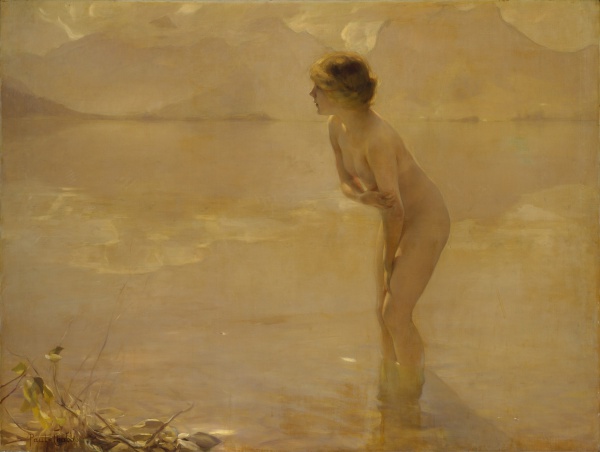Facts About September Morn
"Matinée de Septembre" more commonly known as "September Morn" is an oil painting by French artist Paul Émile Chabas that created quite a stir in its time. Completed in 1911, the painting depicts a nude young girl standing in shallow water, basking in the gentle light of the morning sun. It first attracted attention at the Paris Salon in 1912. Over the years, it exchanged hands multiple times before settling at the Metropolitan Museum of Art in New York City in 1957.
When "September Morn" reached the United States, it caused an uproar. Opinions were polarized; some called for its censorship while others defended it as art. These debates even led to legal battles. Yet, despite—or perhaps because of—the controversy, the painting gained immense popularity. It inspired songs, stage shows, films, and a plethora of merchandise. Critics were divided, with some deriding it as overly sentimental or outright kitschy, while others appreciated it as an important historical piece.
Adding to the painting's mystique was Chabas's refusal to reveal the identity of the model. This secrecy fueled numerous rumors and claims from various women over the years. The painting itself has had a fascinating journey: it traveled from Paris to Russia, survived the October Revolution, and eventually returned to the United States.
While "September Morn" was initially praised for its artistic technique and allure, opinions have shifted over time. Some modern critics dismiss it as banal or kitschy. Regardless, its legacy is undeniable. It stands as one of the most controversial artworks in American history, marking an important chapter in the ongoing conversation about art, censorship, and public perception.
Despite its tumultuous journey and mixed critical reception, "September Morn" remains a significant piece in art history. It serves as a testament to the powerful intersection of art, controversy, and the ever-evolving tides of public opinion.

 Mexico
Mexico